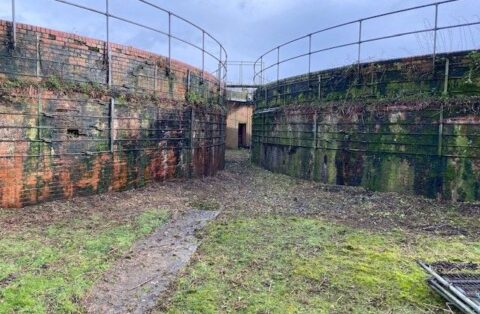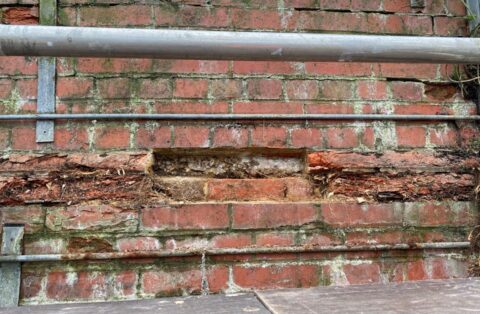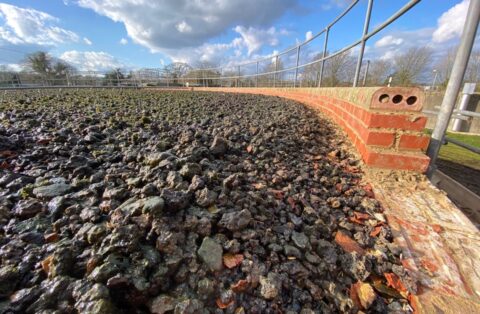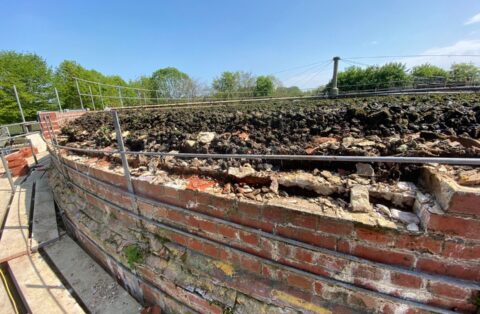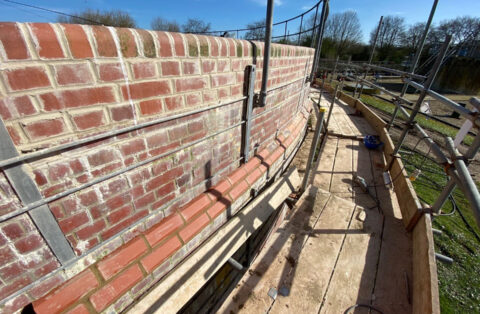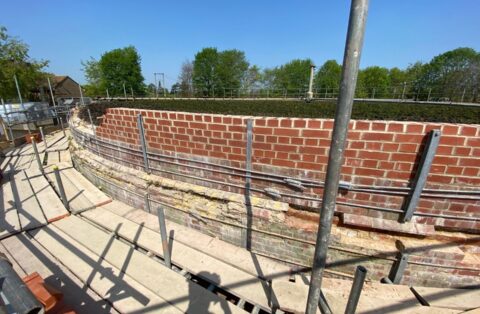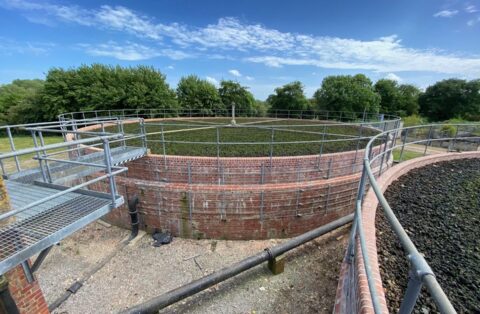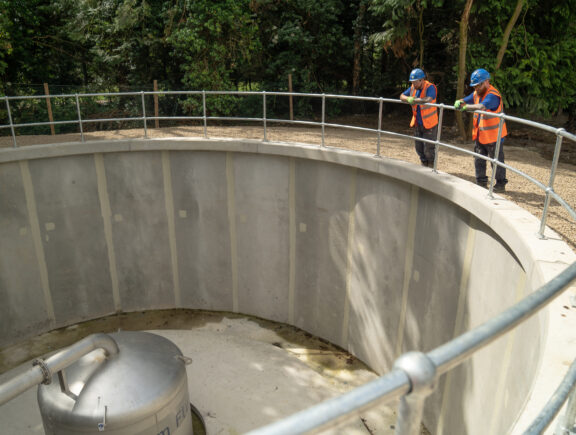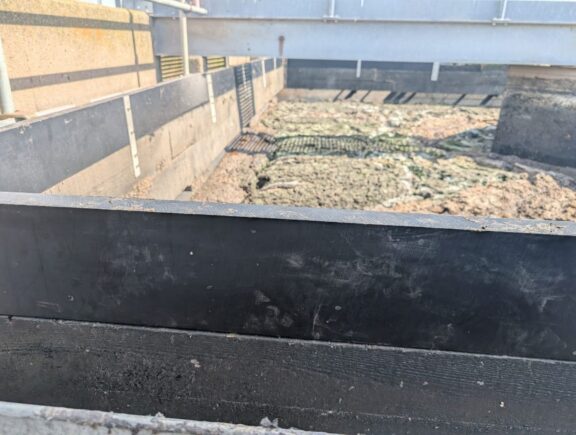Project in numbers
3 live bio-filter beds repaired, extending lifespans by a decade
20 week construction window
The need
Over time, the brickwork forming the lower levels of three bio-filter beds had deteriorated due to weather exposure, vegetation and root intrusion which had penetrated the brickwork. Mortar joints were leaking, and areas of masonry had started to crumble, threatening both the performance and lifespan of the tanks.
To avoid drying out the beds and disturbing the biological media, the client required that all repair work be carried out live, with minimal flow disruption throughout the programme.
The solution
It was decided that repairing the existing beds would provide a greener alternative than a carbon heavy, new-build solution.
The works were carefully sequenced across the three beds to maintain operational performance. This not only reduced bacterial risk, but also ensured minimal disruption to the beds.
Initial tasks included pressure washing and the removal of vegetation and tree roots that had breached the brickwork. Once cleared, the team carried out visual inspections to identify cracks and hidden leaks requiring further attention.
To protect the media and keep all three beds in service, flows were only stopped for up to four hours per day in any one section, with one-hour breaks in between to allow the filters to rehydrate. This allowed the team to rake back the media to the required depth and open up controlled working areas.
Masonry repairs were completed in 12-metre sections. Coping stones were removed, and the brickwork below was carefully demolished and rebuilt, reusing original bricks wherever possible. Chamfers were relaid in specific locations, and coping stones reinstated once the wall rebuilds were complete.
The final stage included carrying out repairs with specialist products – repointing, overbanding, and stitching – to create a watertight finish, ensure longevity, and restore the integrity of the filter walls.
Following the completion of these works, the lifespan of the beds had been extended by a decade.
The benefits
- Extends the lifespan of critical wastewater treatment infrastructure
- Maintains biological performance through live working methods
- Reduces environmental and operational risk from drying media or overflow
- Restores structural integrity using a low-impact, phased approach

